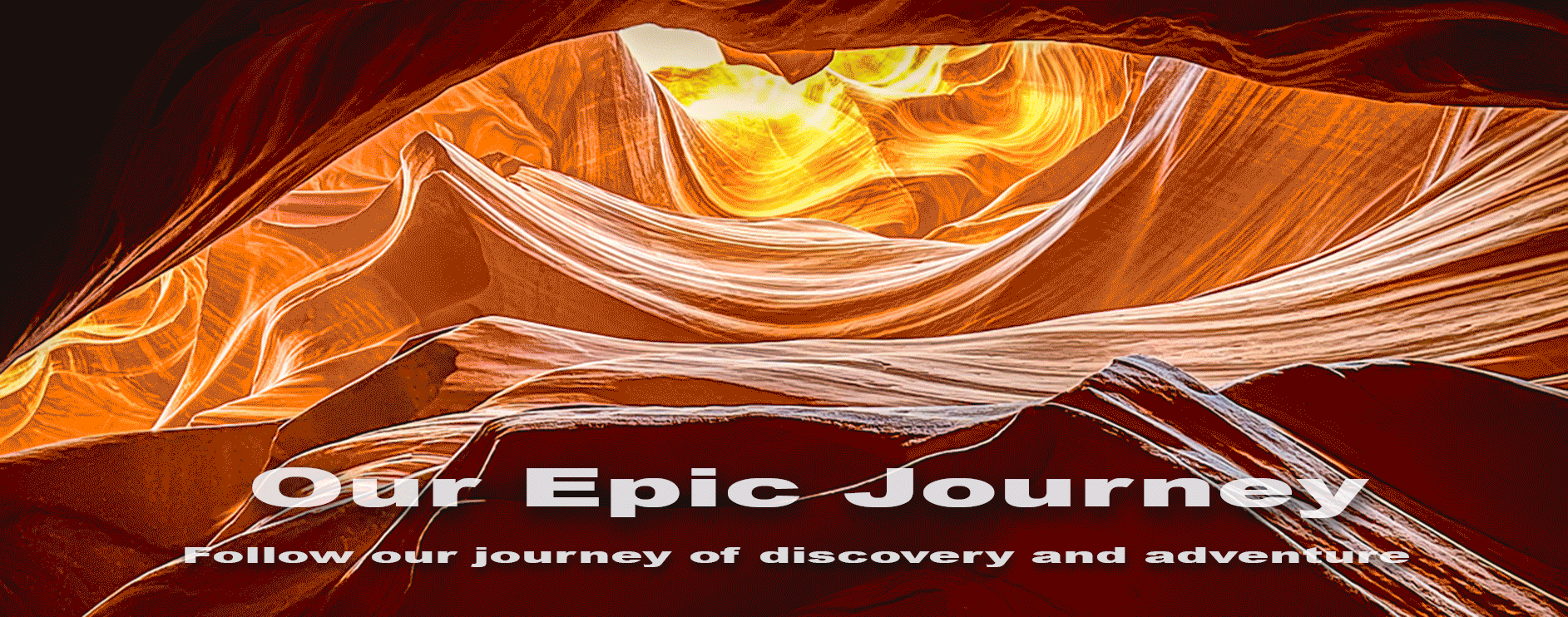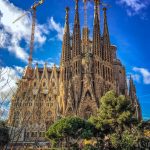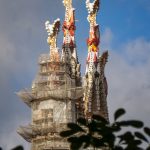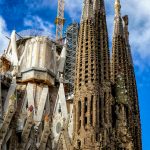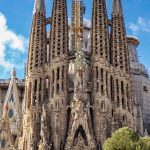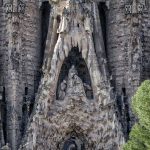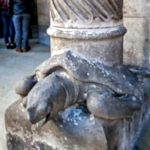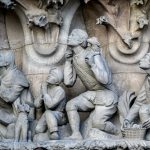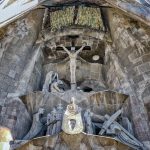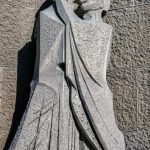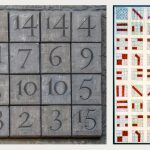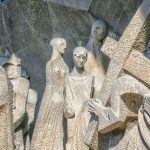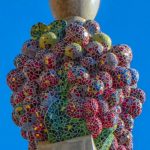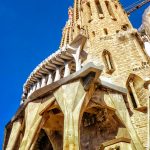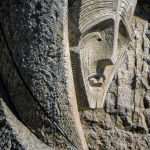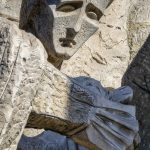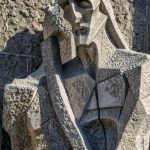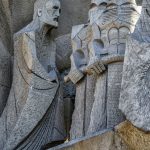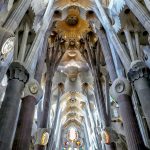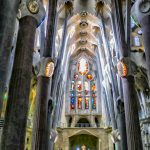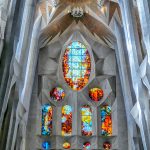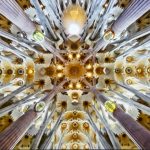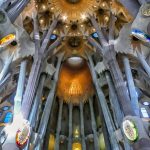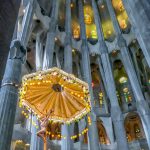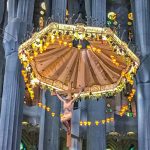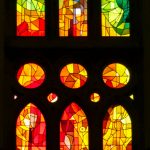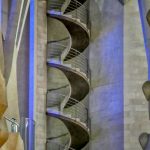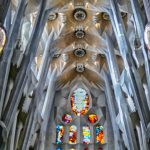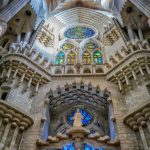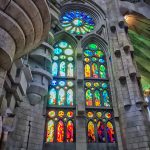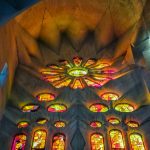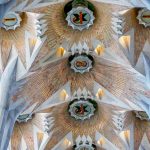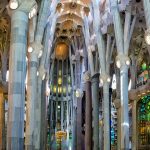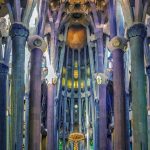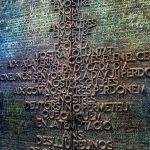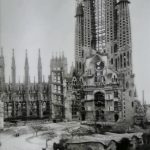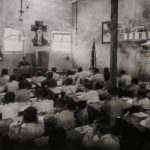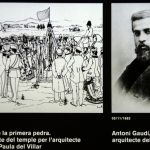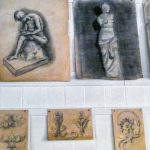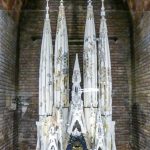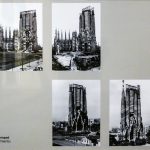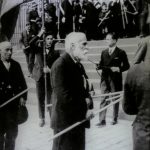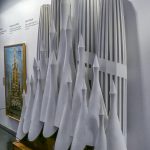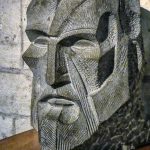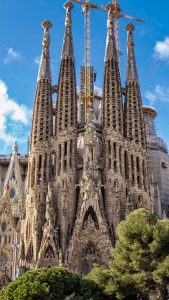 The Sagrada Familia is the most visited monumental site in Spain, over 3 million visitors per year, and our bus tour of 34 people with a guide was a small impact on the number of people already there. The challenge of making a half-completed building the most visited monument in a country, could only be achieved by a great, unigue architect, one of those that emerge only very rarely, one like Antoni Gaudi. On March 19,1882, the first stone was laid by the architect, Francecs de Paula del Villar, who submitted his resignation shortly after over a disagreement with the director. In November 1883, Gaudi began work on the Sagrada Familia, combining Gothic and Art Nouveau forms, and continued until his death on June 10,1926 after an accident, when only a quarter of the basilica was completed. This year it has reached its final stage of construction, and 2026 as its estimated completion date,100 years after the death of Gaudi, (1852-1926).
The Sagrada Familia is the most visited monumental site in Spain, over 3 million visitors per year, and our bus tour of 34 people with a guide was a small impact on the number of people already there. The challenge of making a half-completed building the most visited monument in a country, could only be achieved by a great, unigue architect, one of those that emerge only very rarely, one like Antoni Gaudi. On March 19,1882, the first stone was laid by the architect, Francecs de Paula del Villar, who submitted his resignation shortly after over a disagreement with the director. In November 1883, Gaudi began work on the Sagrada Familia, combining Gothic and Art Nouveau forms, and continued until his death on June 10,1926 after an accident, when only a quarter of the basilica was completed. This year it has reached its final stage of construction, and 2026 as its estimated completion date,100 years after the death of Gaudi, (1852-1926).
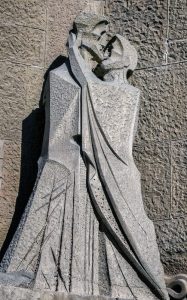
We first went to the Placa de Gaudi for the best view of the Sagrada Familia, and the Nativity Facade, dedicated to the birth of Christ, which faces the rising of the sun to the northeast. The Nativity Facade, one of three facades, was the first example of Modernista architecture, its construction began in 1894 and was completed after the death of Gaudi, in 1930. Bob has captured a lot of the details in his close-up photos of the Nativity Facade. There is tons of symbolism in each of Gaudi’s structures, besides the religious symbols, there is the geometry of nature, as he was inspired by nature. All the pillars resemble trees, two of which are held up by a tortoise and a turtle, representing the earth and the sea. The towers in the Nativity Facade are crowned by parabolic baskets of spring fruit: persimmons, cherries, peaches, plums, apricots and apples. On the opposite exterior is the Passion Facade, the death of Christ. In contrast to the Nativity Facade, the Passion Facade is austere, plain and simple, with ample bare stones and is carved with harsh straight lines, like bones of a skeleton. The Facade depicts the Last Supper, Judas kissing Jesus to betray him, the path of Jesus carrying the cross to the final burial of Christ. And there is a magical square in the Passion Facade whose rows, columns and diagonals all add up to 33, Christ’s age when he died. The third facade is the Glory Facade, began construction in 2002, and will be the principal facade, and is dedicated to the Glory of Jesus, when it is completed. Click on thumbnail to view images
The exterior was amazing, but when I walked inside the basilica it took my breath away. Entering into the Temple, one is in awe of the enormity of the interior with the four towers reaching 100 meters in height, to flood the building with light through the spaces between the cloister and the Temple. Gaudi used paraboloids, hyperboloids and squared surfaces in the ceilings of the naves to provide for continuos natural and artificial lighting. Direct light enters through the stained-glass windows in the facades and is reflected in these elements to create a magical symphony of colors that change with the hours, days and months of the year. Gaudi found his genuine expression in the columns of the Temple, he called ” the forest of columns” in his search for a geometry inspired by nature. All the columns in the Temple (with 6, 8,10 and 12 sides) are based on movement and whose appearance was designed to reflect this, to represent nature, life and growth. Click on thumbnail to view images
After exiting the Sagrada Familia we went to the Museum, where we saw models, plans, structural models and information, and documents relating to the life and work of Gaudi. And we toured Gaudi’s Schools, which have been restored to his original artistic beauty. The photograph in the Museum (below) of the great architect at the Corpus Christi procession in 1924, two years before he died, is an eloquent way to say farewell to Antoni Gaudi, a truly great, immense architect who will, without a doubt, inspire many future generations of architects. Click on thumbnail to view images
